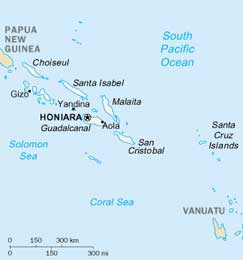History of ancient Polynesia
Deprecated: preg_replace(): The /e modifier is deprecated, use preg_replace_callback instead in /www/htdocs/w006958f/polynesia/wp-includes/functions-formatting.php on line 76
The audacious way of the Polynesians
Four milleniums ago the Pacific was deserted. Then the first men came the long way from Asia in small canvas canoes. Probably the most venturous migration ever began.
The big approach starts about 2000 B.C. The Lapita people which till then lived in Papua New Guinea boarded their canoes like Noah his ark - primed for all contingencies. They had plant seeds, breeding animals, fishing gears, pots, tools and an adequate number of males and females.
Melanesia was their workout area 
Starting from Papua New Guinea they primarily crossed Melanesia where most of the islands are situated close-packed. Starting from Bismarck Achipelago over the course of 500-800 years the Lapita people penetrate the Salomones and finally Vanuatu.
When they populated this Archipelago as well terms of the Pacific’s nursery were over. What they looked at was the open-ranged ocean.
Heading to Fiji
The distance between Vanuatu and Fiji is about 900 km (almost 500 seamiles). The Lapita people managed to cover it with their canoes. It must have taken roughly eight or nine days until they saw the volcanos of Viti Levu, the largest island of Fiji.
As they may have assumed the island wasn’t on its own. There were dozens of nearby islands, atolls and reefs forming a promising archipelago. And all were unoccupied.
Becoming homelike
The Lapita culture spreads out across the Fiji islands. 100 years later it reached Tonga which is 700 km (almost 400 seamiles) away. A couple of generations later (about 1000 B. C.) the first boats landed at Samoa.
As all of those archipelagos were uninhabited the immigrants needed a brisk exchange of goods with their former homeland. When they had sufficient animals, plants and men the conjunction drops. They have become Polynesians.